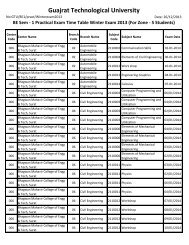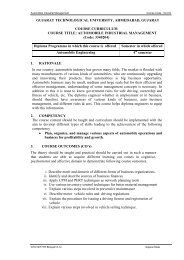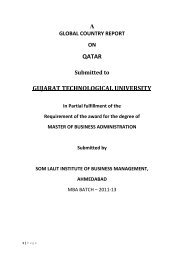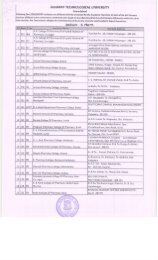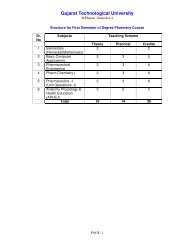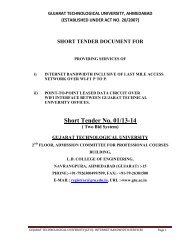751-Sabar Institute Of Management, Tajpur - Gujarat Technological ...
751-Sabar Institute Of Management, Tajpur - Gujarat Technological ...
751-Sabar Institute Of Management, Tajpur - Gujarat Technological ...
You also want an ePaper? Increase the reach of your titles
YUMPU automatically turns print PDFs into web optimized ePapers that Google loves.
substantial governmental support for science, and – last but not least – the emergence of<br />
industrial research laboratories (Landes, 1999: 290-291; Cameron / Neal, 2003: 242-243).<br />
More specifically, the invention of the company-sponsored research organisation was<br />
identified as the undoubtedly greatest single contribution of the German dyestuff industry<br />
(Beer, 1959: 73). This path-breaking organisational revolution transformed the firms from<br />
fellow-runners to market leaders in synthetic dye production. At least since Beer’s<br />
observation, the research laboratories of the dyestuff industry itself had been the object of<br />
scientific research. The focus of these studies had been the development at Bayer (e.g., Beer,<br />
1959; Meyer-Thurow, 1982; Murmann, 2006) whereas the two other major dyestuff<br />
producers, BASF and Hoechst, were much less intensively investigated (Homburg, 1992;<br />
Reinhardt 1997).Yet, the evidence of a science-based second industrial revolution is much<br />
less clear for other industries.<br />
The German Biotechnology Sector<br />
Unlike the majority of other industries, German biotechnology has actually grown during the<br />
crisis. In 2009, the number of employees exceeded the 30,000 mark for the first time. In<br />
terms of turnover, biotech companies managed to maintain their course, even at the height of<br />
the crisis. As with the previous year, this figure stood at two billion Euros. Moreover,<br />
investments in the future have not been scaled back. At one billion Euros, research spending<br />
remained at the same level as the previous year. The effect of this was that the drug candidate<br />
pipeline continued to grow in 2009. Nevertheless, concerns remain about the difficult<br />
financial environment. These are the central results of the company survey carried out at the<br />
beginning of 2010 by the information platform biotechnologie.de on behalf of the Federal<br />
Ministry of Education and Research (BMBF). The data are in compliance with the guidelines<br />
laid out by the Organization for Economic Cooperation and Development (OECD; see pages<br />
27 ff for methodology). According to the survey, at 531, the number of companies occupied<br />
primarily with biotechnology in 2009 is higher than the 2008 figure (501).<br />
82



